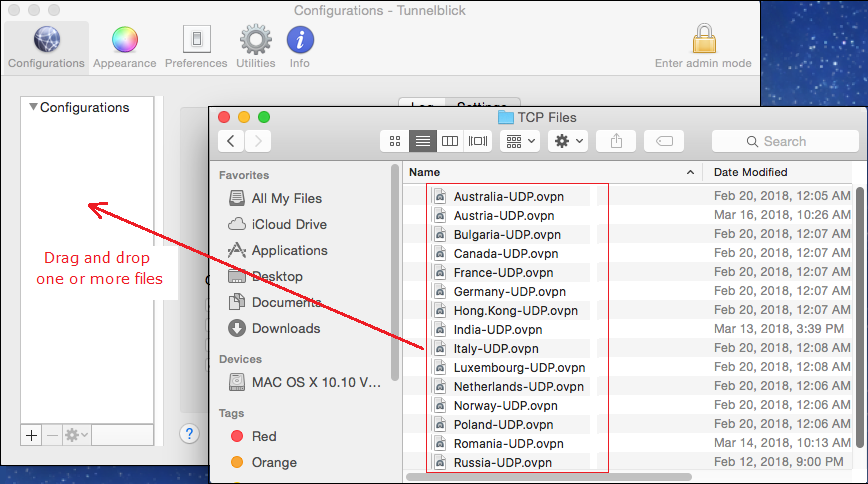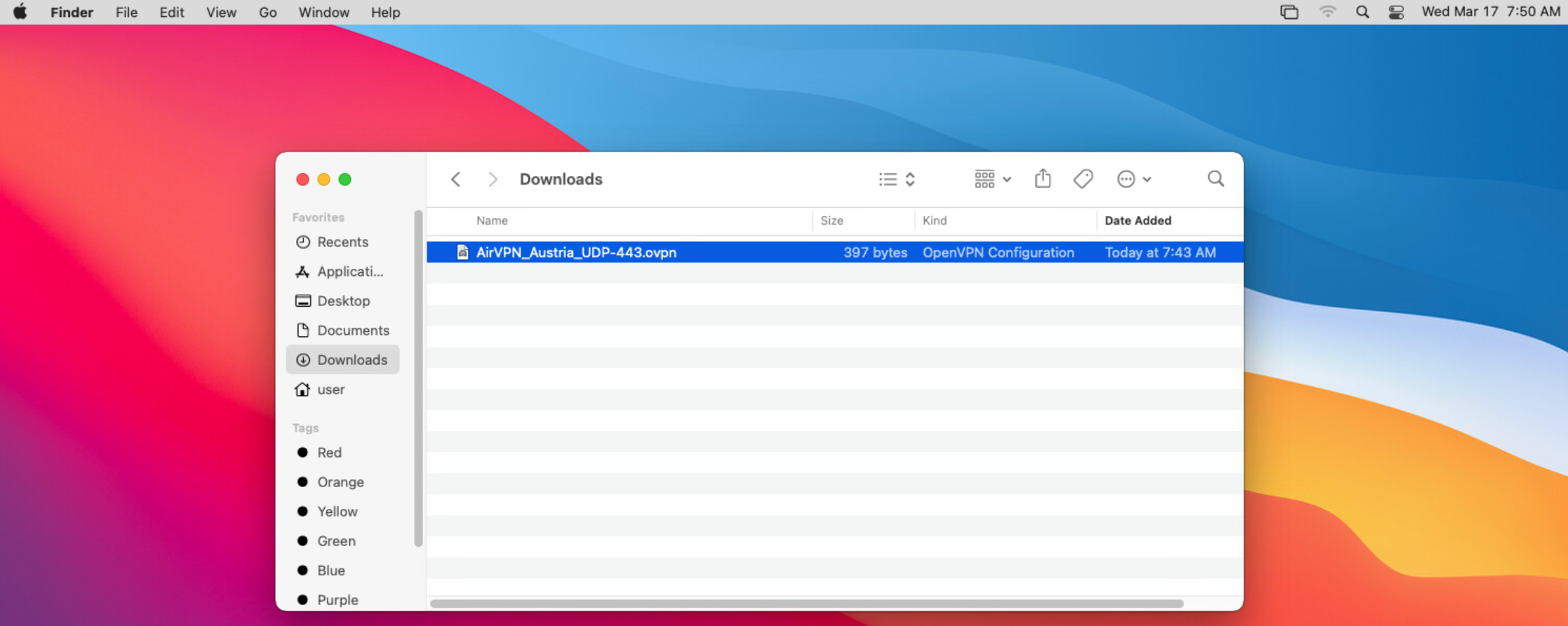


However, a Tunnelblick developer has reviewed the patch, found some problems, and modified it in Tunnelblick to resolve those problems.
#Tunnelblick openvpn Patch
Tunnelblick Modifications to the PatchĪs the OpenVPN developers point out, the patch has never been through a thorough review for security, coding, etc. Large organizations have the ability and power to "unscramble" traffic and detect it as OpenVPN traffic, and the obfuscation provided by this patch is so rudimentary that relatively simple cryptanalysis will probably be able to unscramble the content, too. Beware of cryptographic advice from amateur cryptographers! The obfuscate option is also much easier on the CPU than any cipher options This is incase you are using ddwrt or openwrt or have a low speed cpu."ĭo not take this advice! The obfuscation provided by this patch appears to be extremely rudimentary.

The original post proposing the patch claims that using the patch is sufficient to secure communications and that no other encryption is necessary: "With this obfuscate option, I think that it is ok to use "cipher none", because working out the method used would take a lot of cryptoanalysis. Using obfsproxy is more complicated because it involves running another, separate program on both the server and the client.īecause the patch is so easy to implement, the patch is included in all versions of OpenVPN that are included in Tunnelblick as of build 4420. Regardless of the OpenVPN developers decision not to include the patch in OpenVPN, the patch is attractive because it is so easy to implement: simply apply the patch to both the OpenVPN server and the OpenVPN client and add a single, identical option to the configuration files for each. OpenVPN developers again explained why they do not want to include the patch in OpenVPN and discussed alternatives. In December 2016, further discussion took place on the OpenVPN users mailing list. "To avoid confusing users further going for a possibly insecure setup, this thread will be locked now."

"For more information, have a look at these URLs It is called obfsproxy and can be used together with OpenVPN without needing any re-compilation of OpenVPN. "And we especially discourage using such an approach when there exists a far better solution, used by the TOR community. The discussion has been removed, but the last post was: "We (OpenVPN developers) do not encourage people building their own versions of OpenVPN changing the wire-protocol like this, without the patch being through a proper patch review and having evaluated possible security risks related to such a change. There was a long discussion of the patch on the OpenVPN Community Support Forum. However, the patch is controversial: it was not accepted as an addition to OpenVPN by the OpenVPN developers. The option "scrambles" each buffer of traffic before it is sent between the OpenVPN client and server. The option can be useful to avoid having OpenVPN traffic detected by monitoring or censoring mechanisms such as the Great Firewall of China. The Patch as Modified for Use in TunnelblickĪ patch to add a "scramble" option to OpenVPN was proposed in April, 2013.


 0 kommentar(er)
0 kommentar(er)
